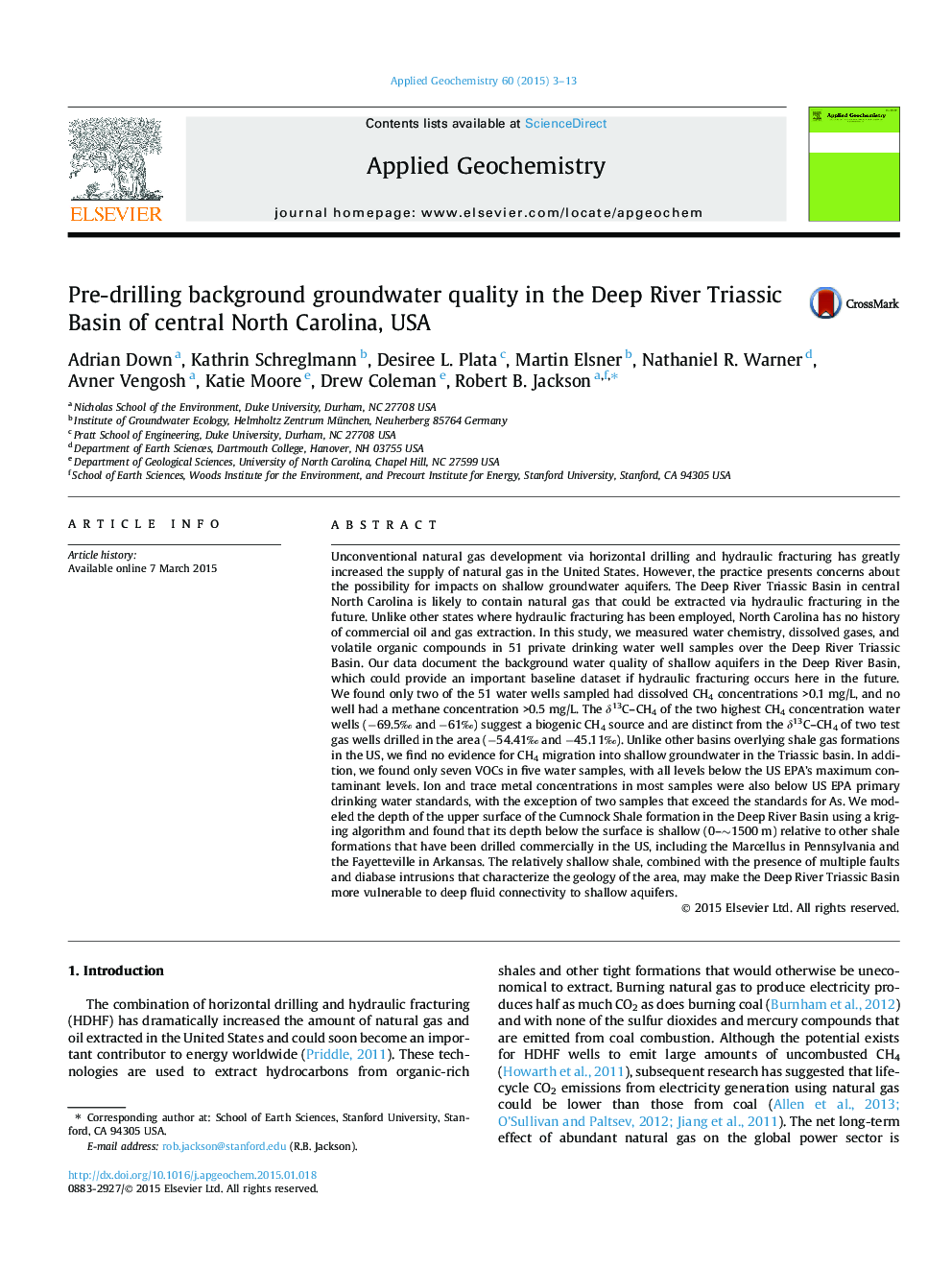| Article ID | Journal | Published Year | Pages | File Type |
|---|---|---|---|---|
| 4435636 | Applied Geochemistry | 2015 | 11 Pages |
•We sampled 51 drinking water wells in NC to establish baseline water quality.•All wells had dissolved CH4 <0.5 mg/L and the δ13C–CH4 of two wells was biogenic.•We did not find thermogenic CH4 migration into the region’s shallow groundwater.•We found only 7 VOCs in 5 water samples, with levels below the EPA’s MCLs.•All but 2 ion and metal concentrations were below US EPA primary standards.
Unconventional natural gas development via horizontal drilling and hydraulic fracturing has greatly increased the supply of natural gas in the United States. However, the practice presents concerns about the possibility for impacts on shallow groundwater aquifers. The Deep River Triassic Basin in central North Carolina is likely to contain natural gas that could be extracted via hydraulic fracturing in the future. Unlike other states where hydraulic fracturing has been employed, North Carolina has no history of commercial oil and gas extraction. In this study, we measured water chemistry, dissolved gases, and volatile organic compounds in 51 private drinking water well samples over the Deep River Triassic Basin. Our data document the background water quality of shallow aquifers in the Deep River Basin, which could provide an important baseline dataset if hydraulic fracturing occurs here in the future. We found only two of the 51 water wells sampled had dissolved CH4 concentrations >0.1 mg/L, and no well had a methane concentration >0.5 mg/L. The δδ13C–CH4 of the two highest CH4 concentration water wells (−69.5‰ and −61‰) suggest a biogenic CH4 source and are distinct from the δδ13C–CH4 of two test gas wells drilled in the area (−54.41‰ and −45.11‰). Unlike other basins overlying shale gas formations in the US, we find no evidence for CH4 migration into shallow groundwater in the Triassic basin. In addition, we found only seven VOCs in five water samples, with all levels below the US EPA’s maximum contaminant levels. Ion and trace metal concentrations in most samples were also below US EPA primary drinking water standards, with the exception of two samples that exceed the standards for As. We modeled the depth of the upper surface of the Cumnock Shale formation in the Deep River Basin using a kriging algorithm and found that its depth below the surface is shallow (0–∼1500 m) relative to other shale formations that have been drilled commercially in the US, including the Marcellus in Pennsylvania and the Fayetteville in Arkansas. The relatively shallow shale, combined with the presence of multiple faults and diabase intrusions that characterize the geology of the area, may make the Deep River Triassic Basin more vulnerable to deep fluid connectivity to shallow aquifers.
